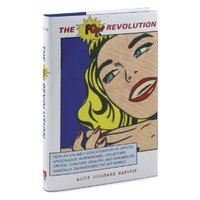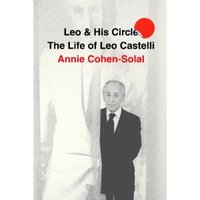Ready for “a Pop social history, which is at its best when capturing the tempo of the movement’s march through the institutions — really a breakneck gallop that seems to have occurred in a matter of months”?
 Today’s Wall Street Journal has an excellent review — “Attack of the Hipsters” by Michael J. Lewis of Alice Goldfarb Marquis’s new book “The Pop Revolution.” (And a short excerpt from the book as well.)
Today’s Wall Street Journal has an excellent review — “Attack of the Hipsters” by Michael J. Lewis of Alice Goldfarb Marquis’s new book “The Pop Revolution.” (And a short excerpt from the book as well.)
That’s his description above. Lewis remarks on what he calls a strange attribute of the book, namely that it will please both “the friends of Pop and its foes:”
Pop’s friends will read it as an account of an aesthetic revolution that displaced the humorless and posturing European-derived formalism of the postwar years–one thinks of Barnett Newman’s portentous “Zip” paintings, where a quavering pillar of light suggested a portal opening onto another universe–and substituted a content-rich art that was deeply engaged with American life and subject matter. Among the iconic works that signaled Pop’s triumph were Roy Lichtenstein’s comic-strip- inspired “Whaam!” (1963), depicting a fighter-plane dogfight; and Andy Warhol’s multiple images of Marilyn Monroe in “Marilyn Diptych” (1962).
Pop’s foes, by contrast, will read “The Pop Revolution” as the saga of a crass commercial enterprise in which a mindless populist fad cut short the career of Abstract Expressionism, America’s only meaningful contribution to the world art.
 That’s a great talent for an author who wants her book to sell. As Lewis says, preceding my first quote from the book above, “Ms. Marquis’s principal contribution is that she tells the story of Pop not by profiling the artists themselves, as is usually done, but by tracing the interlocking network of galleries and collectors that sustained them.”
That’s a great talent for an author who wants her book to sell. As Lewis says, preceding my first quote from the book above, “Ms. Marquis’s principal contribution is that she tells the story of Pop not by profiling the artists themselves, as is usually done, but by tracing the interlocking network of galleries and collectors that sustained them.”
Leo Castelli is chief among them, of course. Castelli is about to more scrutiny: In a few weeks, Annie Cohen-Solal’s biography Leo And His Circle will be published.
Judging by the advanced billing, Cohen-Solal’s book will have a different tone. From Publisher’s Weekly:
Cohen-Solal writes with energy, wit, and aplomb, and though she was a friend of Castelli’s, she maintains a balanced critical distance, pointing to his initial misjudgment of Andy Warhol’s genius, his perpetually complicated love life (with numerous mistresses and multiple marriages), his often frustratingly high standards and constant need for reassurance. Yet Castelli emerges as a rare individual: a magnanimous lover of art.
Could be an interesting contrast.
